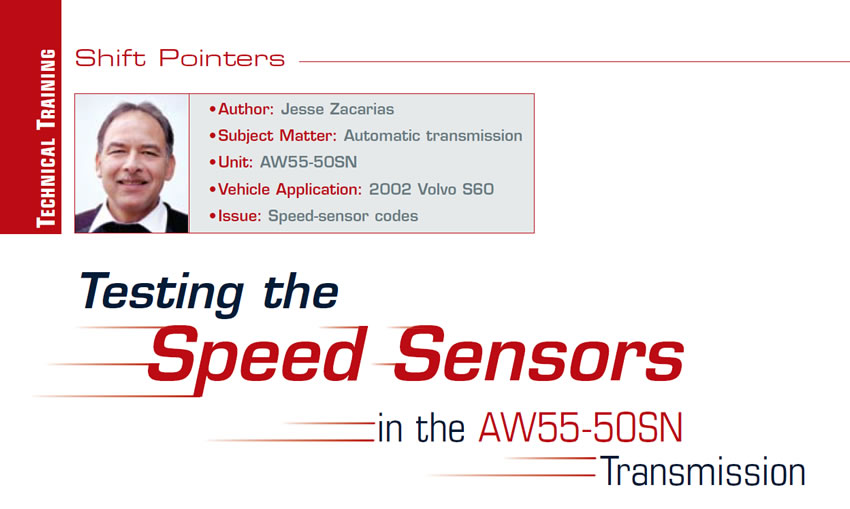
Shift Pointers
- Author: Jesse Zacarias
- Subject Matter: Automatic transmission
- Unit: AW55-50SN
- Vehicle Application: 2002 Volvo S60
- Issue: Speed-sensor codes
A 2002 Volvo S60 arrived at our shop with two codes in the TCM: 0023 “Transmission input shaft speed sensor signal missing” and 0089 Transmission input speed sensor, signal too low.” The vehicle was in “limp-home mode,” which allows the transmission to be operated in 3rd and 4th gears only and with high line pressure. The customer had bought the vehicle with these conditions and did not know its history. Visual observation showed that someone had spliced into the speed sensors (Figure 1) and had replaced the transmission with a used one.
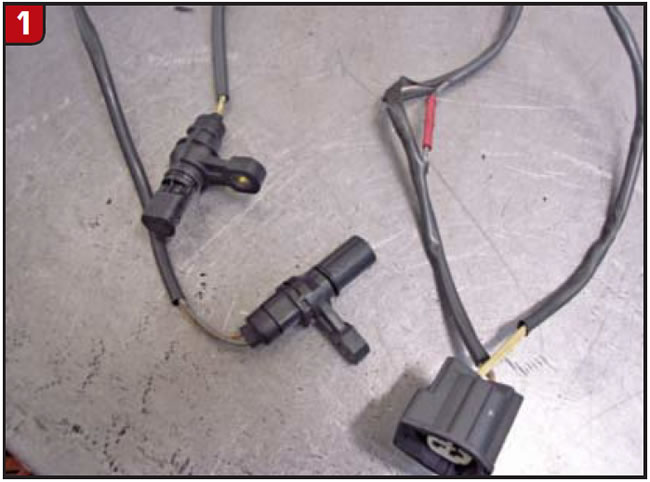
Code 0023 is set by the TCM under either of two conditions: It can mean that the failure of the input-speed-sensor (ISS) signal is either intermittent or permanent. Code 0089 means the ISS reading is too low. The transmission data on the scan tool showed the ISS at zero rpm all the time.
With the cut wire on the speed-sensor harness and the fact that there is an updated speed-sensor assembly we decided to replace the sensors. The old speed-sensor harness is hardwired onto the speed sensors; the updated harness kit separates the speed sensors from the harness (part # 30713724), making it possible to replace speed sensors in the future without replacing the harness.
After we replaced the speed sensors and cleared the codes, the problem persisted and code 0023 came back immediately, which told us that the problem was permanent and not intermittent. We decided to approach this in a different way, since it was obvious that someone had been trying to correct this problem by checking the speed sensors and replacing the transmission with a used one.
The best way to check the speed sensors is to back-probe the TCM and check for voltage drop, but on a Volvo this is pretty difficult without a break-out box. The next-best thing is to check the resistance of the speed sensors by probing the TCM connector with the TCM removed (Figure 2). This method will check the entire circuit of each speed sensor for open or shorted wires.
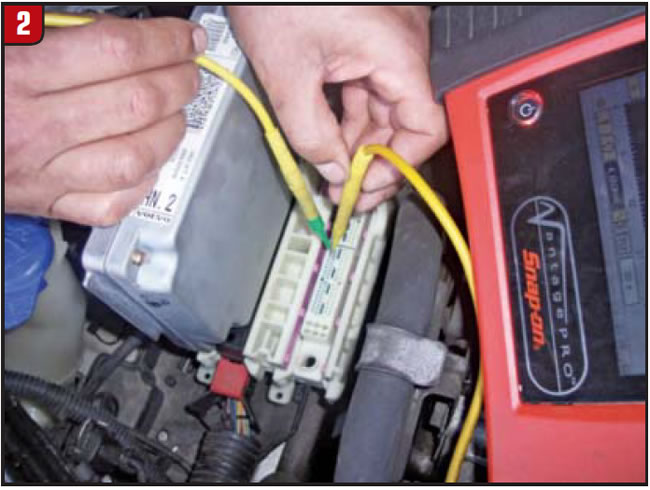
Pins A41 and A59 will check the ISS circuit, and A57 and A39 will check the output-speed-sensor (OSS) circuit. The reading should be between 3 and 7 megohms for both ISS and OSS, depending on temperature (Figure 3). Be sure to use a probe no bigger than 0.026 inch so as to not to open up the female connector, which will cause a faulty connection between the TCM and the harness. If you use a probe bigger than 0.026 inch, then just touch the wire without sticking the probe into the female connector. I have corrected many electrical problems because someone had use the wrong probe and damaged the connectors, causing a bad connection.
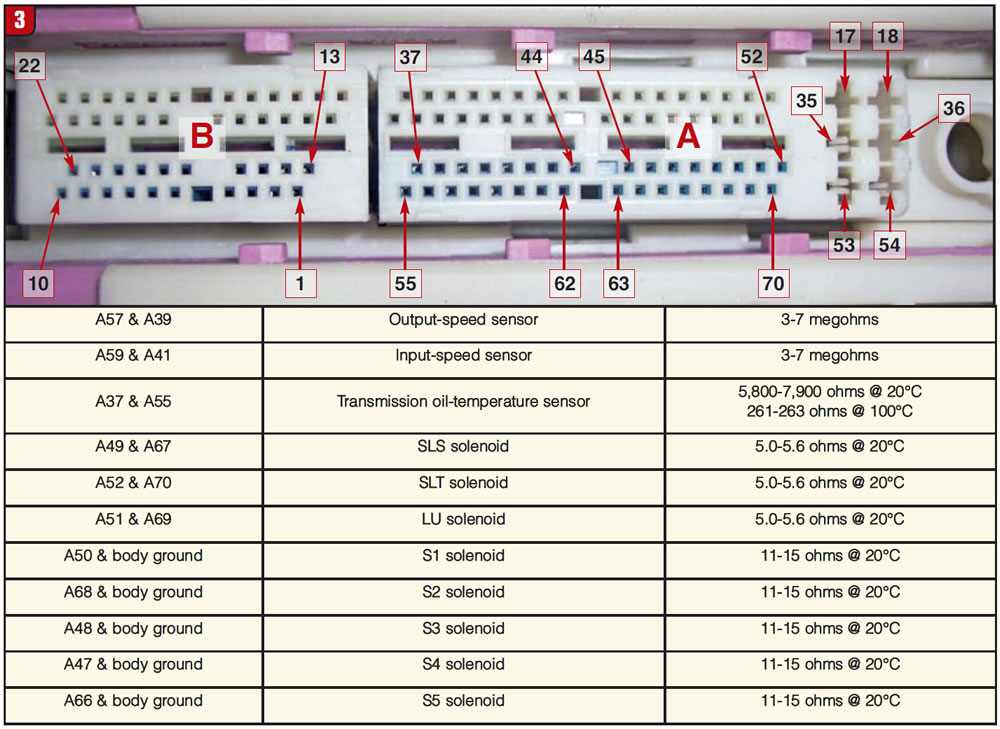

After we checked the sensors’ resistance, we removed one of the meter probes from the TCM harness and touched it to the vehicle’s body frame to check for a short to ground. We returned the meter probe back to the pin, removed it at the TCM harness, and removed the other meter probe and did the same test. Both showed a good connection and no short to ground or open circuit on any of the connectors or wires.
Next we decided to check for the voltage provided by the TCM to the ISS and OSS. To do this we installed the TCM back into the vehicle, connected the car battery and disconnected harness connector “A,” which connects both speed sensors to the TCM. With key on, engine off, you should have anywhere between 7 and 9 volts in pins 2 and 4 (Figure 4).
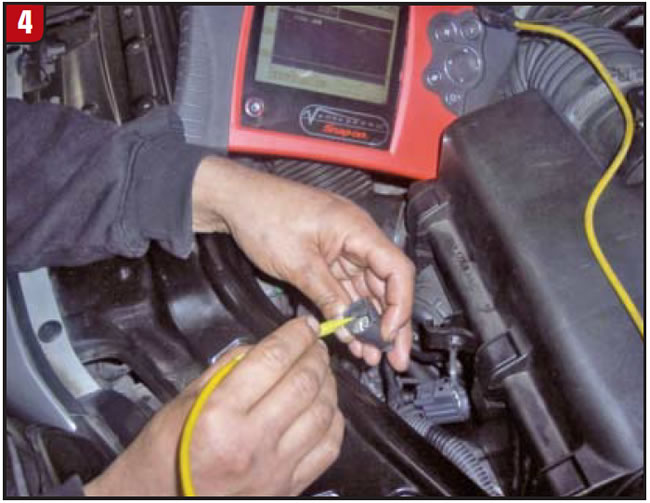
Here we noticed that although pin 4 (OSS) voltage was 7.7, pin 2 (ISS) voltage was only 4.3. When we reconnected the harness, the voltage on the ISS dropped to 1.8 and on the OSS to 7.2. We had already confirmed no opens or shorts to ground on each circuit, so we knew we had a bad TCM. While there we decided to check for a good ground from the TCM to the speed sensors at pins 1 and 3. With harness “A” reconnected and back-probing pins 1 and 3 we had 0.280 millivolt during engine cranking, which proved we had a good ground.
After replacing the TCM we got the voltage to the ISS and OSS restored, and the transmission returned to normal operation.
Both the ISS and OSS are two-wire Hall-effect sensors, and the TCM provides both the voltage and ground to each speed sensor. The voltage is provided through pin # A57 for the OSS and pin # A59 for the ISS, and the ground is provided through pins A39 and A41. Since the resistance of the speed sensor is so high, this causes a very small current to go through the sensors, somewhere between 7 and 14 milliamps. The 7mA difference is too small to read, so the best thing to do is check the voltage drop at the speed sensor, as the exciter is closer to the magnet of the speed sensor, causing the change of current (Hall effect). In this instance it is between 300 and 400mV (Figure 5).
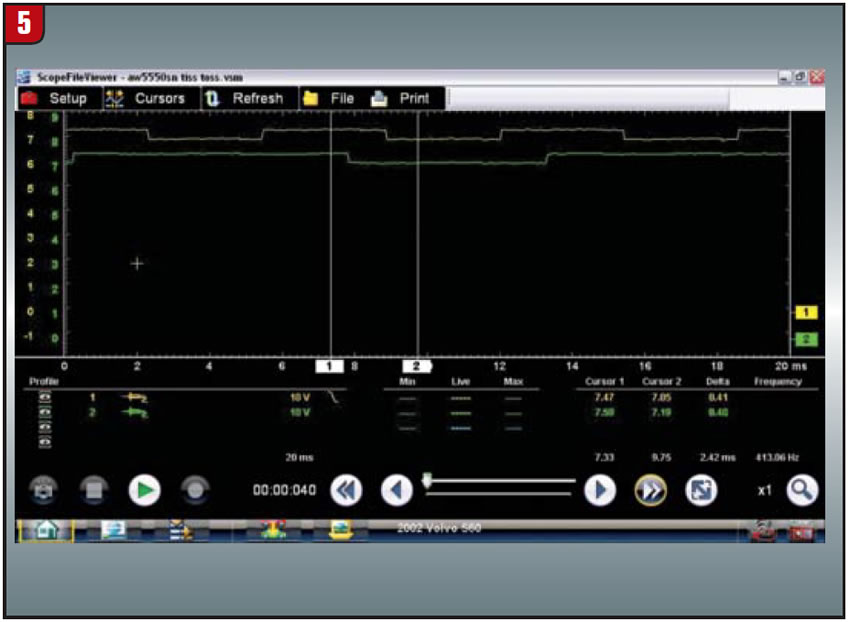
Figure 5 shows channel 1, yellow tracer, back-probing ISS voltage at pin # 2 of the A connector and channel 2, green tracer, back-probing OSS voltage at pin # 4 of the A connector, The scope is grounded to battery ground. Cursor 1 is where the exciter is farthest from the sensors, and cursor 2 is where it is the closest. The voltage drop remains the same with little change due to temperature change of the speed sensor. The frequency, however, will increase for the ISS as engine speed increases, and for the OSS as engine speed decreases.
The pin ID we have provided in Figure 3 seems to be the same for all Volvo models that use the AW55-50SN transmission.

Jesse Zacarias is the owner of Elec-Tran Diagnostics (www.electrandiagnostics.com) in Gilroy, Calif., and part of the research-and-development department at Valve body Pros.













